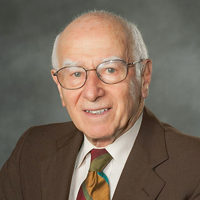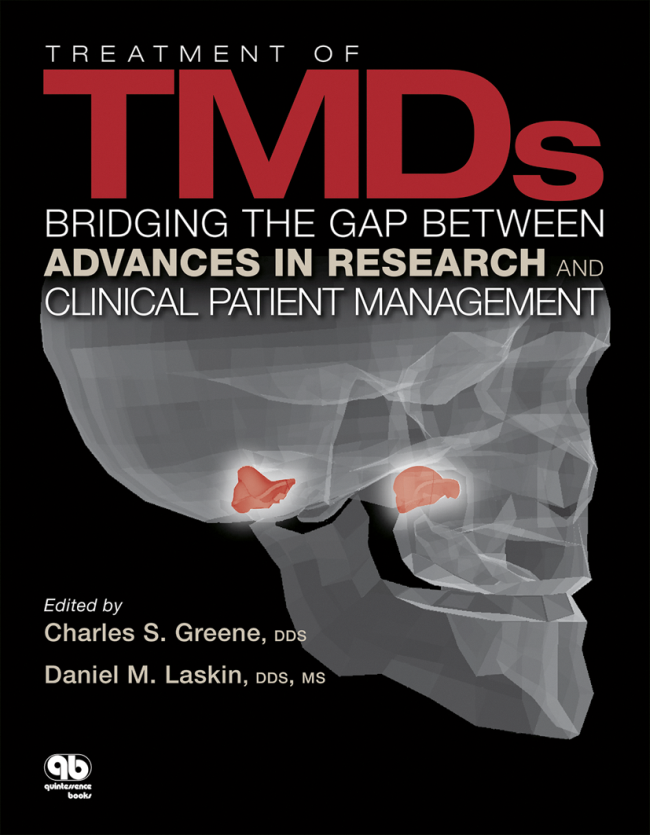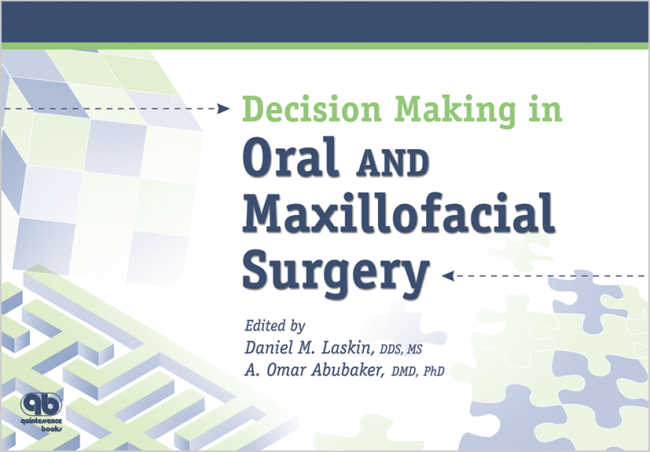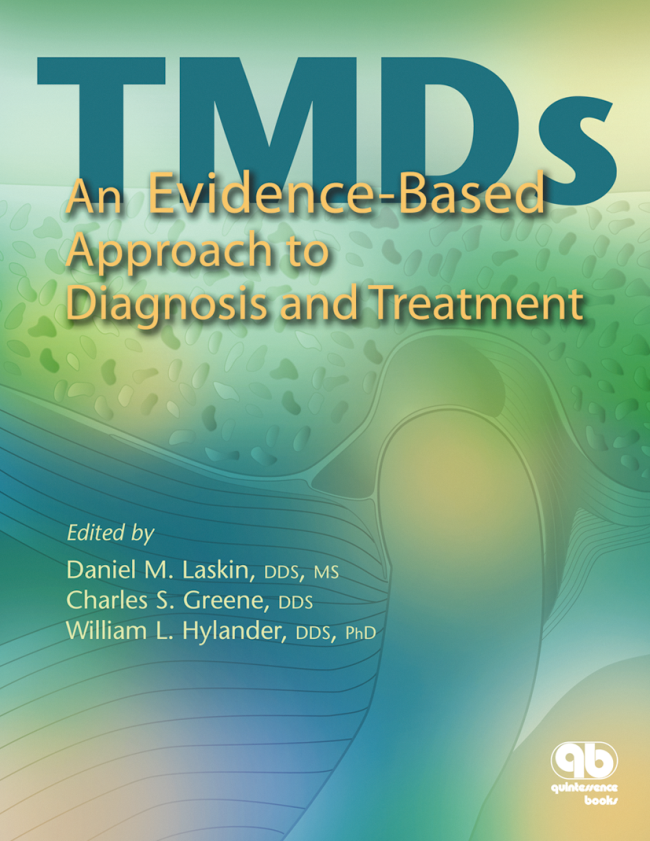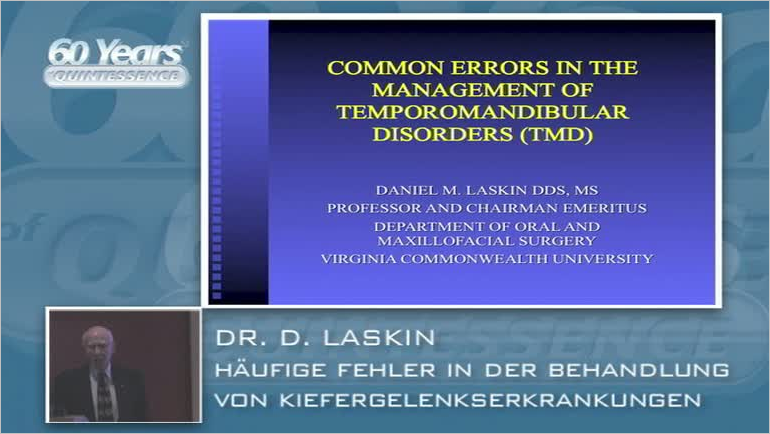Quintessence International, 3/2019
DOI: 10.3290/j.qi.a41919, PubMed-ID: 30773572Seiten: 204-207, Sprache: EnglischLaskin, Daniel M. / Carrico, Caroline K.Objective: Considerable emphasis has been placed on the fear that patients undergoing oral surgery have of the local anesthetic injection. However, other potential factors such as fear of pain during the operation, fear of the operation itself, and fear of postoperative pain are often not considered. The purpose of this study was to determine how patients rank their fear of these four factors. Such information can be helpful in improving patient management.
Method and materials: Patients 18 years of age and older presenting to the Oral Surgery Clinic of the Virginia Commonwealth University School of Dentistry for tooth extraction were asked to complete a brief questionnaire ranking their fear of the four previously noted factors, as well as to include their age, gender, and level of education.
Results: One hundred patients (52 females and 48 males), ranging in age from 18 to 93 years, completed the survey. Sixty-one had a high school education, 22 had some college education, and 17 had a college degree or higher. Twenty-five ranked pain from the local anesthetic as their greatest fear, 26 ranked pain during the operation as their greatest fear, 18 ranked the operation as their greatest fear, and 31 ranked fear of postoperative pain the highest. There were some significant differences in the rankings between females and males.
Conclusions: The results of this study show that patients have fear of pain during and after the procedure as well as of the local anesthetic injection. To maximize patient comfort, how all these factors will be properly managed needs to be discussed preoperatively.
Schlagwörter: anesthesia, fear, gender, oral surgery, pain
Quintessence International, 5/2012
PubMed-ID: 22536595Seiten: 429-434, Sprache: EnglischVega, Oscar G. / Janus, Charles / Laskin, Daniel M.Objective: Hand washing is the most important way to prevent the spread of infection. However, studies have shown that there is a lack of knowledge among physicians about proper hand hygiene. The purpose of this study was to determine the knowledge of general dentists and dental specialists regarding the correct agents to use and the appropriate times to wash hands.
Method and Materials: A questionnaire asking for demographic information and the answers to questions about proper hand hygiene practices and agents was sent via email to a list of general dentists and dental specialists. A total of 480 completed surveys were received (approximately 15% response).
Results: None of the respondents answered all the questions correctly. Six percent answered 4 questions correctly, 23% answered 3 questions correctly, and 47% answered only 2 questions correctly. There was no correlation between the number of correct answers and whether the respondent was a general dentist or a specialist.
Conclusion: There is a lack of knowledge among dentists regarding proper hand hygiene. For the benefit of both the patient and the doctor, this situation must be remedied.
Schlagwörter: hand hygiene, hand washing, hand washing agents
Quintessence International, 7/2011
PubMed-ID: 21716985Seiten: 575-577, Sprache: EnglischKondori, Ida / Mottin, Roberta W. / Laskin, Daniel M.Objective: Dentists play an important role in the early diagnosis and treatment of oral lesions. However, treatment based solely on a clinical impression of the diagnosis, without histologic confirmation, can result in serious consequences, particularly when the lesion is precancerous or cancerous. The purpose of this study was to determine the overall accuracy of clinical diagnoses made by dentists as well as to compare the diagnostic ability of general practitioners with members of various dental specialties.
Method and Materials: The biopsy reports of 976 specimens submitted to the Department of Oral and Maxillofacial Pathology, Virginia Commonwealth University School of Dentistry, between January 2009 and January 2010 were reviewed. The presumptive clinical diagnosis made by the practitioner and the final histologic diagnosis on each specimen were recorded in addition to whether the submitting dentist was a general practitioner or a specialist.
Results: Of the clinical diagnoses made by the submitting dentists, 43% were incorrect. General dentists misdiagnosed 45.9%, oral and maxillofacial surgeons 42.8%, endodontists 42.2%, and periodontists 41.2% of the time. The most commonly missed clinical diagnoses were hyperkeratosis (16%), focal inflammatory fibrous hyperplasia (10%), fibroma (8%), periapical granuloma (7%), and radicular cyst (6%). Cancerous lesions were misdiagnosed 5.6% of the time.
Conclusions: The high rates of clinical misdiagnosis by dental practitioners indicate that all excised lesions should to be submitted for histologic diagnosis.
Schlagwörter: cancer diagnosis, clinical misdiagnosis, diagnostic accuracy
Quintessence International, 5/2010
PubMed-ID: 20376380Seiten: 433-437, Sprache: EnglischGiglio, James A. / Laskin, Daniel M.Objectives: To determine the prevalence of psychiatric disorders in adult patients seeking general dental care because their presence can have a significant impact on how these patients should be managed.
Method and Materials: Medical history questionnaires from 442 randomly selected patients who presented for examination at the Virginia Commonwealth University School of Dentistry were reviewed for a positive history of psychiatric conditions, whether they were being treated for their condition, and what medications were prescribed.
Results: Twenty percent of the patients had a positive history of a psychiatric disorder. The most common disorder for both sexes was depression. Other disorders included anxiety, bipolar disorder, eating disorder, claustrophobia, attention deficit disorder, seasonal affective disorder, and schizophrenia. More than one disorder was reported by 50% of men and 37% of women, the most common combination being depression and anxiety. Seventy-seven percent of women and 69% of men were under active treatment. Commonly prescribed medications, which can have important adverse effects, included selective serotonin uptake inhibitors, benzodiazepines, lithium, and tricyclic antidepressants. Twenty patients reported taking more than one medication for their disorder.
Conclusion: A significant number of dental patients have a psychiatric disorder. Because such disorders can affect the patient's response to dental treatment and require treatment modifications, and the adverse effects of the medications being used can alter the oral environment, clinicians need to be aware of their presence and the proper way to manage these patients.
Schlagwörter: adverse effects, general dental care, medical history, prevalence, psychiatric disorders, psychotropic drugs
The International Journal of Oral & Maxillofacial Implants, 2/2009
Seiten: 359, Sprache: EnglischLaskin, Daniel M.Quintessence International, 7/2007
PubMed-ID: 17694209Seiten: 541, Sprache: EnglischLaskin, Daniel M.Quintessence International, 5/2003
Seiten: 331-342, Sprache: EnglischLaskin, Daniel M. / Giglio, James A. / Rippert, Eric T.This article reviews the clinical characteristics of the numerous local and systemic conditions that frequently involve the tongue and presents classifications based on their appearance and common locations that can aid dentists in their early recognition and clinical diagnosis.
The International Journal of Oral & Maxillofacial Implants, 5/2003
Seiten: 739-744, Sprache: EnglischLaskin, Daniel M.A case is presented in which bilateral fractures of the mandible occurred following placement of endosseous dental implants. The management, with approximately 7 years of follow-up, is described and the potential causes of such fractures and their treatment are discussed.
Quintessence International, 9/2000
Seiten: 637-641, Sprache: EnglischGiglio, James A. / Laskin, Daniel M.A thorough physical examination of the head and neck should be included as part of the evaluation of every dental patient. Although they most often represent a self-limited inflammation, a benign neoplasm, or a congenital anomaly, neck lesions can also be malignant. Because the pathologic lesions that can arise in the neck are varied and diverse, the diagnostic thought process should be orderly and inclusive so that a reasonable differential diagnosis can be established and prompt, effective treatment can be rendered.
The International Journal of Oral & Maxillofacial Implants, 1/1993
Seiten: 11, Sprache: EnglischLaskin, Daniel M.



